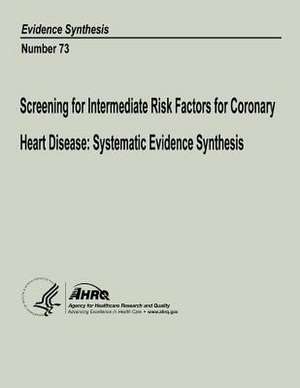Screening for Intermediate Risk Factors for Coronary Heart Disease
Autor U. S. Department of Heal Human Services, Agency for Healthcare Resea And Qualityen Limba Engleză Paperback
Preț: 158.00 lei
Preț vechi: 166.32 lei
-5% Nou
Puncte Express: 237
Preț estimativ în valută:
30.24€ • 31.38$ • 25.27£
30.24€ • 31.38$ • 25.27£
Carte disponibilă
Livrare economică 25 februarie-11 martie
Preluare comenzi: 021 569.72.76
Specificații
ISBN-13: 9781484871478
ISBN-10: 1484871472
Pagini: 166
Dimensiuni: 216 x 279 x 9 mm
Greutate: 0.4 kg
Editura: CREATESPACE
ISBN-10: 1484871472
Pagini: 166
Dimensiuni: 216 x 279 x 9 mm
Greutate: 0.4 kg
Editura: CREATESPACE
